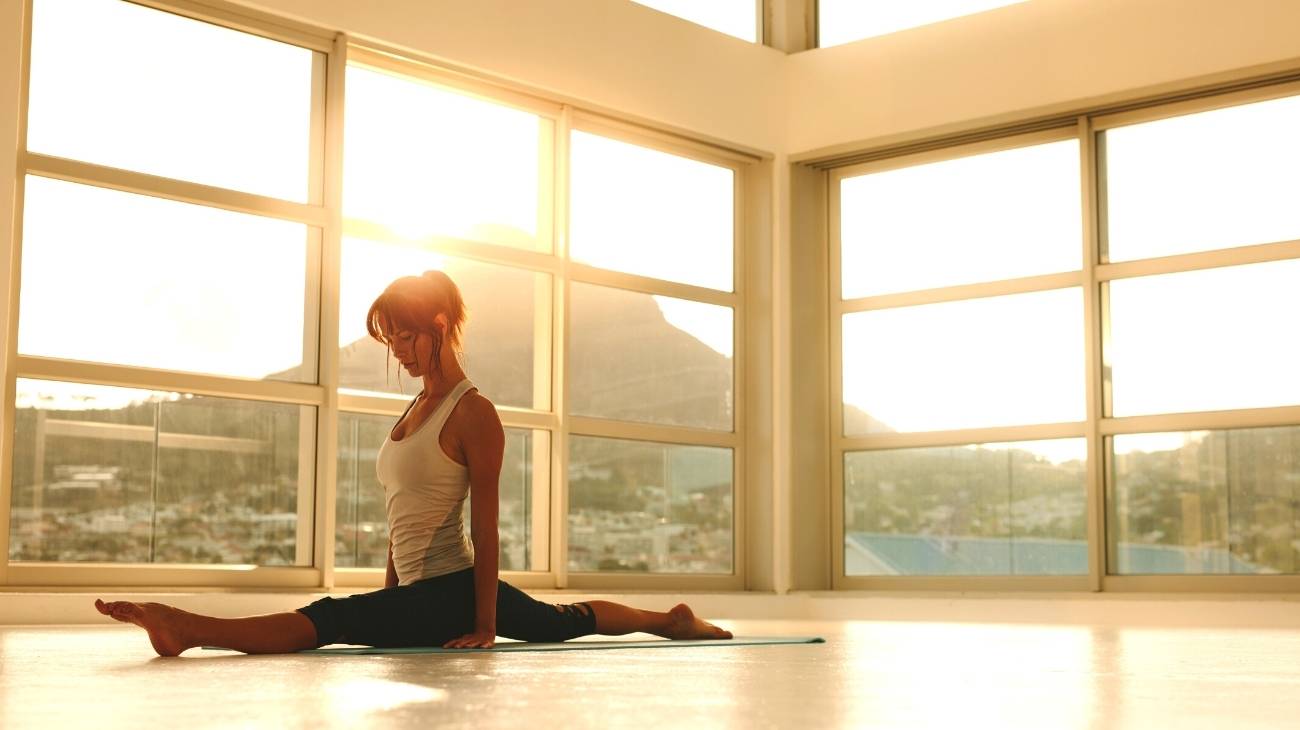As we know, yoga is an excellent therapeutic exercise for the back, so back injuries in yoga are very rare. However, poor posture practices eventually end up affecting the deeper muscles of the spine, compromising discs, ligaments, joints and surrounding muscles.
In this post we will talk about the most common types of back and lumbar injuries when we do yoga, and how they are generated. Also, we want to tell you about the PRICE protocol and how it is used as a first aid alternative to treat these types of injuries. Let's get started!
What are the most common types of back and lumbar injuries when doing Yoga?
During the practice of some yoga postures, it is possible that the force is concentrated in a narrow point of the lumbar spine. This results in a compression injury, causing severe back pain.
Also, when the practitioner's body is not prepared for an arch in the back, as occurs during the Warrior I posture (Virabhadrasana I). Thus, experiencing hyperextension of the lower back, accompanied by acute and persistent pain and inflammation of the nerves.
Also, it should be noted that bending backwards, forwards and twisting are also triggers for back injuries in yogis. This is due to the muscles and other structures that contribute to maintaining the balance between these movements, affecting the lumbar area of the back.
Below, we would like to tell you about the most common types of back and lumbar injuries when practising yoga:
Sacroiliac (SI) joint dysfunction
Extreme movement or prolonged fixation of the back or hip during a yoga pose can trigger pain in the lower back, extending to the groin. This condition is very similar to sciatica, in some cases affecting the area above the knee, down to the ankle or foot.
Some specialists point out that the triangle posture is one of the main postures that could twist the sacrum, specifically the sacral-iliac (SI) joint. The practitioner may experience discomfort, pain, and even severe lower back pain.
Lumbar strain
Lumbar strain is a type of yoga injury that occurs in the lower back. The main cause is overstretching or partial or complete tearing of the muscles and tendons. As a result, the yogi may experience acute pain, spasm, tenderness and inflammation.
One yoga posture that often causes tears in the joint and surrounding muscles is Ardha Matsyendrasana. This is a seated twist, usually performed with a rounded back that requires a strong leg pull to deepen the twist of the whole body.
Herniated disc
A herniated disc or herniated disc is caused by the rupture of a vertebral disc after natural degeneration. However, it can also be triggered by excessive weight lifting or severe twisting of the back due to poor yoga posture. As a result, the practitioner will experience local pain, numbness and weakness in the lower limbs.
Postures such as forward folds, downward dog or keeping the legs too straight for any other posture could trigger disc problems and lower back injuries in yoga. This is especially true during back rounding, as it requires the spine to bend in the opposite way to its natural position.
Best products for the recovery of back and lower back injuries in Yoga
Bestseller
-
Microwave Wheat Bag for Back Pain Relief (Extra Large) (Hearts)
£24,95 -
Microwave Wheat Bag for Back Pain Relief (Extra Large) (Oxford)
£24,95 -
Microwave Wheat Bag for Back Pain Relief (Extra Large) (Sport)
£24,95 -
Microwave Wheat Bag for Neck & Shoulder Pain Relief (Hearts)
£24,95 -
Microwave Wheat Bag for Neck & Shoulder Pain Relief (Oxford)
£24,95 -
Microwave Wheat Bag for Neck & Shoulder Pain Relief (Sport)
£24,95 -
Microwaveable Wheat Bag for Pain Relief (Hearts)
£20,95 -
Microwaveable Wheat Bag for Pain Relief (Oxford)
£20,95 -
Microwaveable Wheat Bag for Pain Relief (Sport)
£20,95 -
Wheat Bag for Microwave Classic Bottle Shaped (Hearts)
£20,95 -
Wheat Bag for Microwave Classic Bottle Shaped (Oxford)
£20,95 -
Wheat Bag for Microwave Classic Bottle Shaped (Sport)
£20,95
-
Back Support Belt (Black)
£39,95 -
Back Support Belt (Green)
£39,95 -
Back Support Belt (Pink)
£39,95 -
Ice Massage Roller Ball (Black)
£34,95 -
Ice Massage Roller Ball (Green)
£34,95 -
Ice Massage Roller Ball (Pink)
£34,95 -
Sacroiliac Support Belt (Black)
£24,95 -
Sacroiliac Support Belt (Green)
£24,95 -
Sacroiliac Support Belt (Pink)
£24,95 -
Soft Density Foam Roller for Recovery (Black)
£34,95 -
Soft Density Foam Roller for Recovery (Green)
£34,95 -
Soft Density Foam Roller for Recovery (Pink)
£34,95
How to apply the RICE therapy to treat back injuries in Yoga?
When it comes to yoga injuries, the RICE therapy is one of the most commonly used first aid measures. As we know, the initials of RICE stand for "Rest", "Ice", "Compression" and "Elevation". However, the new update has incorporated "Protection" as part of the process to prevent injuries from worsening. This is why it is now known as the PRICE protocol, especially indicated within the first 24-72 hours of injury.
Below, we will talk about the different phases that must be fulfilled in this protocol to treat yoga injuries:
- Protection: A back injury may cause acute pain, numbness, stiffness and tenderness. Therefore, this will prevent you from further injuring this area, as the discomfort will encourage you to protect it. Protecting it is necessary, requiring the use of a brace or bandage to limit movement in whole or in part.
- Rest: Resting is a necessary phase to contribute to the healing process. In the case of a lumbar injury, it is necessary to suspend the practice of yoga, otherwise it could delay recovery or worsen the injury.
- Ice: Cryotherapy is indicated within 72 hours of the injury, especially if there is acute pain and inflammation. Cold gel packs can be applied to the lower back for 10 to 15 minutes per session, with rest for 1 to 2 hours.
- Compression: There are functional elastic bandages such as spinal orthoses, which contribute to the recovery process. In this way, they are intended to improve venous return and help reduce swelling.
- Elevation: The PRICE therapy is specially designed for the extremities, so in the case of back and lumbar injuries, it is impossible to perform the lifting phase. However, it is possible to complete the above-mentioned phases.
Although the PRICE therapy is one of the most important first aid measures for yoga injuries, our recommendation is that after an injury occurs, a medical specialist should be consulted immediately. This is necessary for a specific analysis of the injury and appropriate treatment to guide recovery.
References
- Klifto, C. S., Bookman, J. S., Kaplan, D. J., Dold, A. P., Jazrawi, L. M., & Sapienza, A. (2018). Musculoskeletal injuries in yoga. Bulletin of the NYU Hospital for Joint Diseases, 76(3), 192-197. https://www.proquest.com/openview/d9fd02671a3ba739a134437f05d8fd86/1
- Broad, W. J. (2012). How yoga can wreck your body. The New York Times, 5. https://www.southbostonyoga.net/trainingManual/howYogaCanWreckYourBody.pdf
- Schatz, M. P. (2016). Back care basics: A doctor's gentle yoga program for back and neck pain relief. Shambhala Publications. https://books.google.es/books?hl=en&lr=&id=BxnIDAAAQBAJ
- Burton, A. K. (2005). How to prevent low back pain. Best practice & research Clinical rheumatology, 19(4), 541-555. https://www.sciencedirect.com/science/article/abs/pii/S1521694205000240
- Hoy, D., Brooks, P., Blyth, F., & Buchbinder, R. (2010). The epidemiology of low back pain. Best practice & research Clinical rheumatology, 24(6), 769-781. https://www.sciencedirect.com/science/article/abs/pii/S1521694210000884
- Ravi, S. (2016). The application and effectiveness of yoga in prevention and rehabilitation of sport injuries in athletes participating in competitive sport. LASE JOURNAL OF SPORT SCIENCE is a Scientific Journal published two times per year in Sport Science LASE Journal for sport scientists and sport experts/specialists, 44. https://www.journal.lspa.lv/images/2016/1/4_LASE_2016_1.pdf
- Russell, K., Gushue, S., Richmond, S., & McFaull, S. (2016). Epidemiology of yoga-related injuries in Canada from 1991 to 2010: a case series study. International journal of injury control and safety promotion, 23(3), 284-290. https://www.tandfonline.com/doi/abs/10.1080/17457300.2015.1032981
- Cramer, H., Lauche, R., Haller, H., Steckhan, N., Michalsen, A., & Dobos, G. (2014). Effects of yoga on cardiovascular disease risk factors: a systematic review and meta-analysis. International journal of cardiology, 173(2), 170-183. https://www.sciencedirect.com/science/article/abs/pii/S0167527314003702
- Paterson, J. (2008). Teaching Pilates for Postural Faults, Illness and Injury: A Practical Guide. Elsevier Health Sciences. https://books.google.es/books?hl=en&lr=&id=A-CAnOi4RV0C
- Barker, A. L., Talevski, J., Bohensky, M. A., Brand, C. A., Cameron, P. A., & Morello, R. T. (2016). Feasibility of Pilates exercise to decrease falls risk: a pilot randomized controlled trial in community-dwelling older people. Clinical rehabilitation, 30(10), 984-996. https://journals.sagepub.com/doi/abs/10.1177/0269215515606197


































































